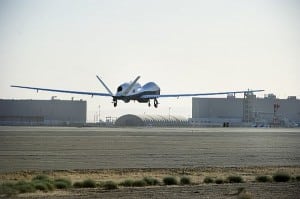
The Navy is playing the waiting game, hoping the weather at Naval Air Station Patuxent River clears up so the MQ-4C Triton unmanned surveillance aircraft can conduct its first sensor flights this week.Severe winds and rain have kept the service from being able to test the unmanned aerial system’s AN/ZPY-3 multi-function active sensor radar, said Sean Burke, the service’s program manager for the persistent maritime unmanned aircraft systems program office.“We were supposed to fly last week, we were supposed to fly…













